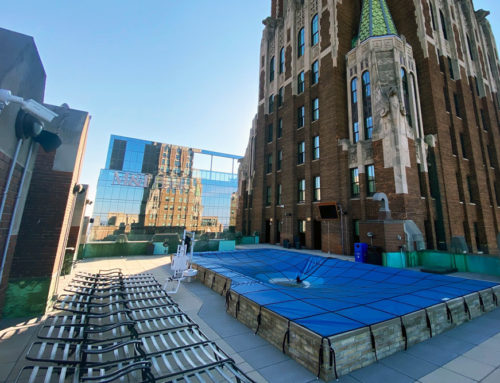When the temperatures crank up in the summer and people in your community have no other way to cool off, chances are they’ll flock to your pool in droves. On the surface, this is a good thing: More patrons means more exposure for your facility, which can draw more funding for pool maintenance and the occasional construction project. In fact, this seems like a pool manager’s dream.
However, overcrowded pools are closer to a nightmare. Packing too many swimmers into the water not only limits how they can enjoy your facility, it also creates potentially unsafe water conditions that could give rise to infections and cause you major issues moving forward. While every pool manager wants their facility to be popular with patrons, overcrowding the water just isn’t worth the trouble.
Overcrowding is less fun for everyone
Every patron comes to your pool with a different idea of what makes swimming fun for them. Some people might like to swim laps for exercise, while others enjoy simply lounging on floatation devices and soaking up some rays. In a pool with a moderate number of swimmers, both of these activities are possible.
In an overcrowded pool where swimmers barely have room to spread their arms, neither of them are. In a scene that’s common in pools around the country, students on Washington state’s Bellingham School District swim team issued a formal complaint to the school about repeatedly renting sections of the facility to outside groups. Three swim teams regularly used the pool in the afternoons until the district began renting out time slots to third parties.
“If you go swimming while [the other groups are] there, only two lanes are open to students,” Amber Hixson, a graduate student at Western Washington University, whose students also have access to the pool, told Western Front Online. “If there’s more than a couple of people swimming, it’s really crowded in those two lanes.”
Overcrowding limits what patrons can do on both sides. Lap swimmers have less room to exercise, and other patrons are also prohibited from entering those lanes. Both groups have less pool to work with, which makes your facility less fun for all involved.
Overcrowding creates unsafe conditions
Pool managers know that it’s hard enough already keeping chemical levels at a safe balance in pools that aren’t regularly overcrowded, but a facility packed with patrons who don’t have the room to move around only compounds the problem.
China is notorious for the number of people that flock to large pools in the summer, and several recent incidents prove that overcrowding creates dangerous water conditions. Amusing Planet explained that pools as large as 30,000 square meters pack up to 10,000 swimmers into the water at a single time. One wavepool in Beijing allows up to 230,000 swimmers.
It’s nearly impossible for pool managers to control the chemical levels of the water with so many people bringing contaminants into these facilities. According to a report from China’s Health Ministry, 10 percent of the public facilities in the country exceeded the upper safety limit for urine byproducts. In 2008, one man died and more than 3,000 were injured from contaminated water in a Beijing pool.
Most patrons will understand that the number of swimmers needs to be capped to ensure everyone has a fun and safe experience. You can experiment with timed periods where swimmers rotate in and out of the water, or you might want to implement a hard cap on the number of people allowed in your pool. Whatever you choose to do, avoiding overcrowding should be a top priority for pool management this summer.






